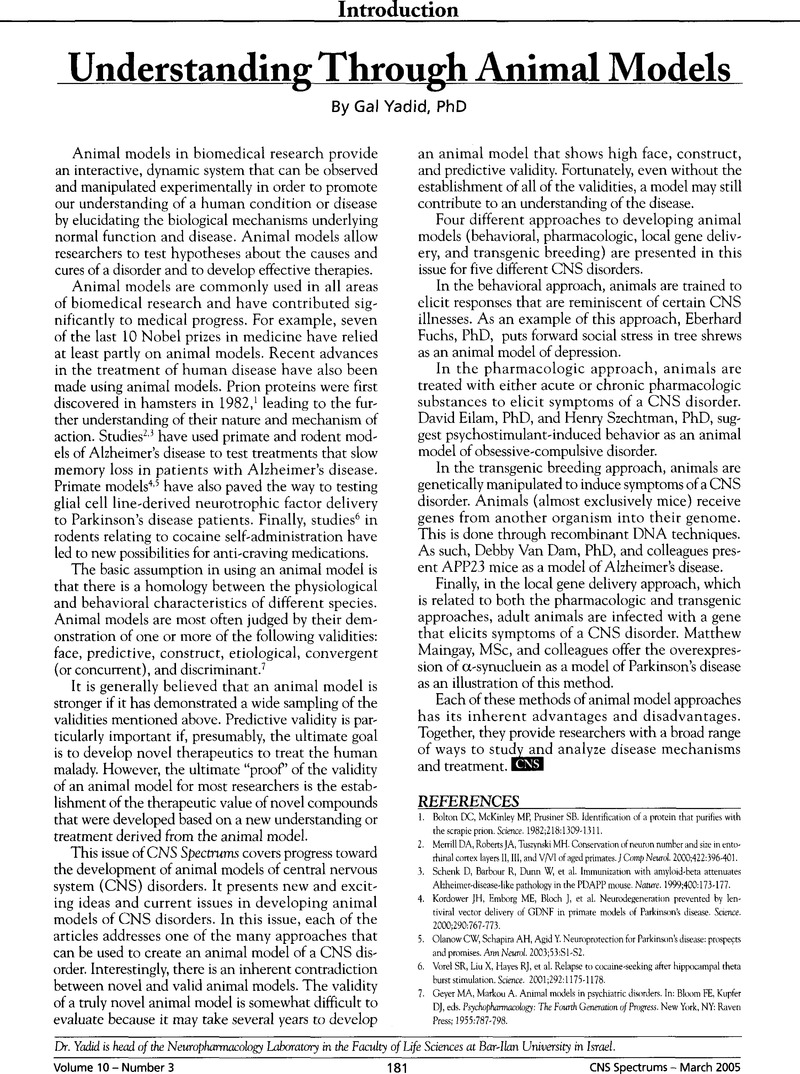No CrossRef data available.
Article contents
Understanding Through Animal Models
Published online by Cambridge University Press: 07 November 2014
Abstract
An abstract is not available for this content so a preview has been provided. Please use the Get access link above for information on how to access this content.

- Type
- Introduction
- Information
- Copyright
- Copyright © Cambridge University Press 2005
References
REFERENCES
1.
Bolton, DC, McKinley, MP, Prusiner, SB. Identification of a protein that putifies with the scrapie prion. Science. 1982;218:1309–1311.Google Scholar
2.
Merrill, DA, Roberts, JA, Tuszynski, MH. Conservation of neuron number and size in entorhinal cortex layers II, III, and V/VI of aged primates. J Comp Neurol. 2000;422:396–401.Google Scholar
3.
Schenk, D, Barbour, R, Dunn, W, et al.
Immunization with amyloid-beta attenuates Alzheimer-disease-like pathology in the PDAPP mouse. Nature. 1999;400:173–177.Google Scholar
4.
Kordower, JH, Emborg, ME, Bloch, J, et al.
Neurodegeneration prevented by lentiviral vector delivery of GDNF in primate models of Parkinson's disease. Science. 2000;290:767–773.Google Scholar
5.
Olanow, CW, Schapira, AH, Agid, Y. Neuroprotection for Parkinson's disease: prospects and promises. Ann Neurol. 2003;53:S1–S2.Google Scholar
6.
Vorel, SR, Liu, X, Hayes, RJ, et al.
Relapse to cocaine-seeking after hippocampal theta burst stimulation. Science. 2001;292:1175–1178.CrossRefGoogle ScholarPubMed
7.
Geyer, MA, Markou, A. Animal models in psychiatric disorders. In: Bloom, FE, Kupfer, DJ, eds. Psychopharmacology: The Fourth Generation of Progress. New York, NY: Raven Press; 1955:787–798.Google Scholar


